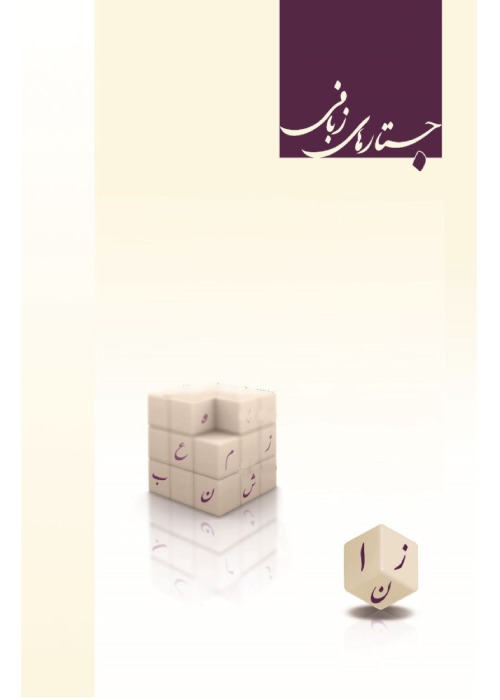Ru and Āberu; Two Aspects of Face in the Iranian Culture: An Ethnographic Study in Pragmatics
Author(s):
Article Type:
Research/Original Article (دارای رتبه معتبر)
Abstract:
About half a century of research on im/politeness has resulted in calls, on the one hand, to separate face and im/politeness research, at least at the beginning, and, on the other hand, to redefine them on the basis of their emic understandings by ordinary people (Eelen, 2001; Bargiela-Chiappini, 2003; Haugh, 2009; 2013b; Arundale, 2006, 2009; Kádár and Haugh, 2013). This paper is an attempt to respond to this call and aims to study the emic concept of face among the Persian speaking people in the Iranian culture. Taking an ethnographic approach, it investigates the uses of the lexeme ru (face, front part of head) in Persian and compares them with the uses of āberu (lit. water-of-face). The data are collected by observing the uses of ru and its idiomatic expressions and collocations (174 tokens of 32 expressions) in daily conversations and Internet searches and are analyzed within their contexts of use and with regard to the researcher's cultural insider knowledge. Ru expressions are divided into four groups according to their meaning: (i) ru (na)shodan (lit. 'face (not) become'), i.e. to have (no) face to do, or not to do, something, (ii) porruyi (lit. 'full-facedness') and rudāri ('to have face'), i.e., cheekiness, (iii) ru zadan/andākhtan (lit. 'to hit/throw one's face') i.e., to make a request and ru zamin zadan/andākhtan (lit. 'hit/throw someone's face on the ground') i.e., to reject someone's request, and (iv) be ru āvardan (lit. 'to bring to face'), i.e., confront someone. It is demonstrated that, unlike āberu which is a metaphor for the positive social image of an individual or group (Hosseini et al., forthcoming), ru is a metonym for the negatively evaluated image of an individual. However, both āberu and ru are assessed according to an individuals perceived compliance with the norms of the moral order (Garfinkel, 1967), including one's moral integrity and show of competence, relative to one's shan or perceived social status. It is concluded that face in the Iranian culture consists of two opposing sides: āberu is the public and positive image of self (Goffman, 1967) and group(s) a person is associated with and is closely connected to ones feeling of competence, perceived social status and the preservation of the distinction between the two realms of inside (bāten/andarun) and outside (zāher/birun) (Beeman, 1986); ru constitutes the private and personal self of the person, which is negative and, probably, because of Sufi teachings and thanks to centuries of life under totalitarian regimes, should be suppressed and kept hidden. The results also indicate that some of the commonest uses of ru suggest the abnegation of self, disguised as positive cultural values of shekaste-nafsi (Sharifian, 2005) and forutani (roughly, modesty) and sharm (shame). The paper also shows that ru and āberu expressions serve to save or threaten face but not in the way predicted by Brown and Levinson (1987): ru and āberu and their idiomatic expressions are not linguistic strategies; rather, they invoke the moral order behind im/politeness evaluations expressed with different linguistic strategies in different contexts.
Language:
Persian
Published:
Language Related Research, Volume:8 Issue: 6, 2018
Pages:
215 to 246
magiran.com/p1782419
دانلود و مطالعه متن این مقاله با یکی از روشهای زیر امکان پذیر است:
اشتراک شخصی
با عضویت و پرداخت آنلاین حق اشتراک یکساله به مبلغ 1,390,000ريال میتوانید 70 عنوان مطلب دانلود کنید!
اشتراک سازمانی
به کتابخانه دانشگاه یا محل کار خود پیشنهاد کنید تا اشتراک سازمانی این پایگاه را برای دسترسی نامحدود همه کاربران به متن مطالب تهیه نمایند!
توجه!
- حق عضویت دریافتی صرف حمایت از نشریات عضو و نگهداری، تکمیل و توسعه مگیران میشود.
- پرداخت حق اشتراک و دانلود مقالات اجازه بازنشر آن در سایر رسانههای چاپی و دیجیتال را به کاربر نمیدهد.
In order to view content subscription is required
Personal subscription
Subscribe magiran.com for 70 € euros via PayPal and download 70 articles during a year.
Organization subscription
Please contact us to subscribe your university or library for unlimited access!




